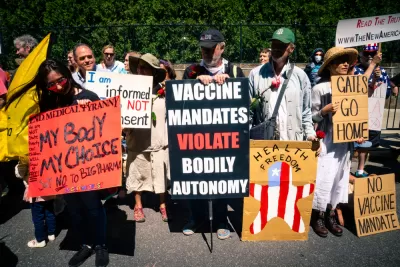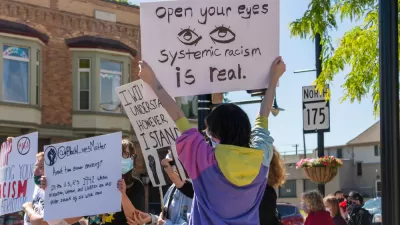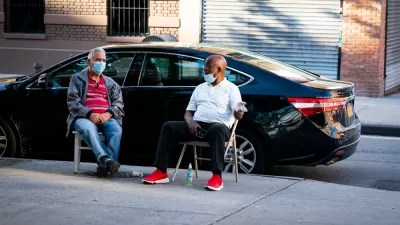For most of the Covid-19 pandemic, Black Americans died at much higher rates than White Americans. That trend has reversed at times during the past year.

The racial and environmental justice issues brought to the forefront by fatality rates from Covid-19 at the beginning of the pandemic, with Black Americans dying at much higher rates than White Americans, has completely reversed in 2022, according to recent analysis by the Washington Post.
"The imbalance in death rates among the nation’s racial and ethnic groups has been a defining part of the pandemic since the start," according to a feature article by Akilah Johnson and Dan Keating. That's no longer the case, however. "Over time, the gap in deaths widened and narrowed but never disappeared — until mid-October 2021, when the nation’s pattern of covid mortality changed, with the rate of death among White Americans sometimes eclipsing other groups," write the duo. The analysis found that the racial disparity vanished at the end of 2021.
As noted in the article, Covid fatality rates in Black Americans are influenced by poor public health outcomes from environmental conditions in Black communities. Black Americans suffer from higher rates of hypertension, diabetes, and obesity than White people—all of which contribute to higher rates of fatalities from Covid-19.
But, Covid-19 is also more likely to kill the unvaccinated, who are more likely to be Republican and White.
As noted in the article, Black Americans aren't the only racial group dealing with the consequences of unhealthy environments during the pandemic: "Cumulatively, Black, Latino and Native American people are 60 percent more likely to die of covid," according to the article.
The percentage could continue to balance if the trends identified in the source article below continue, as they would seem prepared to do with Covid continuing to mutate and vaccination rates continuing to decline.
FULL STORY: Whites now more likely to die from covid than Blacks: Why the pandemic shifted

Study: Maui’s Plan to Convert Vacation Rentals to Long-Term Housing Could Cause Nearly $1 Billion Economic Loss
The plan would reduce visitor accommodation by 25,% resulting in 1,900 jobs lost.

North Texas Transit Leaders Tout Benefits of TOD for Growing Region
At a summit focused on transit-oriented development, policymakers discussed how North Texas’ expanded light rail system can serve as a tool for economic growth.

Why Should We Subsidize Public Transportation?
Many public transit agencies face financial stress due to rising costs, declining fare revenue, and declining subsidies. Transit advocates must provide a strong business case for increasing public transit funding.

How to Make US Trains Faster
Changes to boarding platforms and a switch to electric trains could improve U.S. passenger rail service without the added cost of high-speed rail.

Columbia’s Revitalized ‘Loop’ Is a Hub for Local Entrepreneurs
A focus on small businesses is helping a commercial corridor in Columbia, Missouri thrive.

Invasive Insect Threatens Minnesota’s Ash Forests
The Emerald Ash Borer is a rapidly spreading invasive pest threatening Minnesota’s ash trees, and homeowners are encouraged to plant diverse replacement species, avoid moving ash firewood, and monitor for signs of infestation.
Urban Design for Planners 1: Software Tools
This six-course series explores essential urban design concepts using open source software and equips planners with the tools they need to participate fully in the urban design process.
Planning for Universal Design
Learn the tools for implementing Universal Design in planning regulations.
City of Santa Clarita
Ascent Environmental
Institute for Housing and Urban Development Studies (IHS)
City of Grandview
Harvard GSD Executive Education
Toledo-Lucas County Plan Commissions
Salt Lake City
NYU Wagner Graduate School of Public Service





























